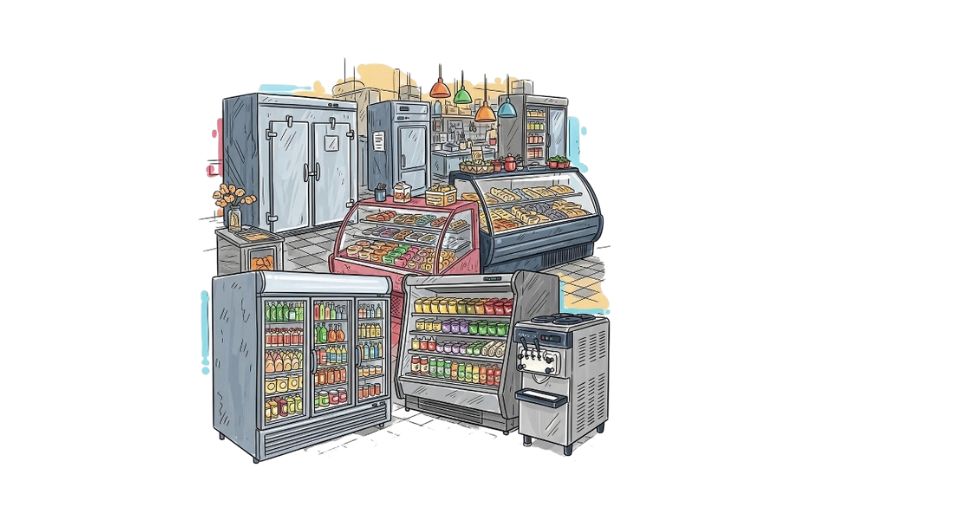
Jul 08, 2025

The report edited by Metastat Insight on the Global Commercial Refrigeration market provides a unique view on a sector that continues to define contemporary food logistics, healthcare infrastructure, and retail optimization. This category of industrial machinery is an unsung backbone in areas where temperature-sensitive products need to be stored, transported, and exhibited within monitored environments. Commercial refrigerators are not just chilly boxes precision-engineered systems to serve an ever-more time-sensitive and quality-focused supply chain. From hypermarkets to pharmaceutical distribution centers, their use goes far and wide, meeting evolving trends in consumption and storage habits.
Global Commercial Refrigeration market is estimated to reach $50,843.17 million in 2025 with a CAGR of 5.8% from 2025 to 2032.
Commercial refrigeration has gone beyond preservation in recent years. There is today an increased focus on systems that will adjust to changing ambient conditions, accommodate different energy norms from one region to another, and preserve product integrity for longer periods. Although the outside of such units may look similar, the internal processes are more advanced with automation and energy-monitoring technology incorporated within. This change has had an impact not merely on manufacturers and retailers but also on end-consumers who increasingly demand fresh and well-maintained products, be it food outlets or health facilities.
Globalization has also impacted the construction and deployment of refrigeration systems. Equipment now moves further distances, being adapted to a broader range of climates and regulatory environments. Such diversity has pushed manufacturers towards offering flexible solutions that can be adapted for particular markets. From modulating compressor capacities to modifying coolant blends, customization of the refrigeration equipment is now an essential approach. Meanwhile, logistics of installation and maintenance of these systems require coordination between local service providers and international suppliers, making a refined web of cooperation that makes constant changes.
The global commercial refrigeration market has also experienced subtle changes in the purchase behavior. Buyers are no longer selecting only on the basis of initial expenditure. Today, factors such as life cycle efficiency, risk of downtime, risk of support services, and stability are taking a major place in purchase strategies. It indicates more recognition of refrigeration plays in operational flexibility and long -term profitability. In addition, manufacturers and distributors of such units are reconsidered how their products fit into a large movement towards reducing energy consumption without renouncing their product efficiency.
The contribution of technology cannot be overlooked here. Remote diagnostics, predictive maintenance software, and intelligent inventory management systems are being paired with refrigeration units so that facilities can observe and respond to problems before they lead to product spoilage. These developments are quietly redefining the concept of operating an effective cold storage facility. But beyond the sophistication that lies behind these developments, the goal is not all that unclear: to deliver unbroken and consistent cooling in an era where it cannot risk lost time in its delivery of necessities.
Industry participants are taking note of the value of post-installation maintenance. As commercial refrigeration equipment becomes more advanced, so does the need for qualified technicians and training programs specific to every model. There is increasing focus on service contracts that provide assurance for fast response and ready availability of parts. These factors, while commonly underrepresented in top-line market data, wield considerable influence on customer satisfaction and equipment life.
Another current operating beneath the surface in the industry is concern for aesthetic and ergonomic design, especially for models located in visible customer-facing retail spaces. Today, supermarkets and cafes look for refrigeration solutions that not only keep products cold effectively but also fit in with their brand image and floor layout. The industry is answering back with slender, noise-reduced designs that fit with contemporary interiors without compromising on cooling ability.
The Global Commercial Refrigeration market report compiled by Metastat Insight summarizes a shift from the old-fashioned cooling systems to innovative, environmentally friendly, and design-focused solutions. While firms evolve with more stringent regulatory environments and greater customer demands, refrigeration systems are changing in secret. They are not considered peripheral infrastructure anymore but are instead part of integrated, responsive systems that are critical to day-to-day operations as well as strategic thinking.
In summary, the picture rendered by Metastat Insight of the Global Commercial Refrigeration industry is one of a business that is constantly innovating in the background. While the equipment itself tends to fly under the radar of stores, kitchens, and lab settings, its impact is far from unseen. With improved technology, mindful design, and changing user needs, the industry advances silently but irreplaceably determining how the modern world stores its perishables and keeps its processes running.
Drop us an email at:
Call us on:
+1 214 613 5758
+91 73850 57479